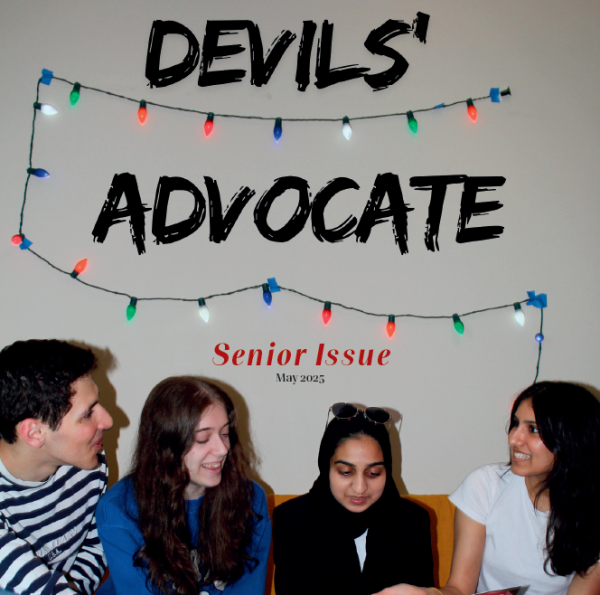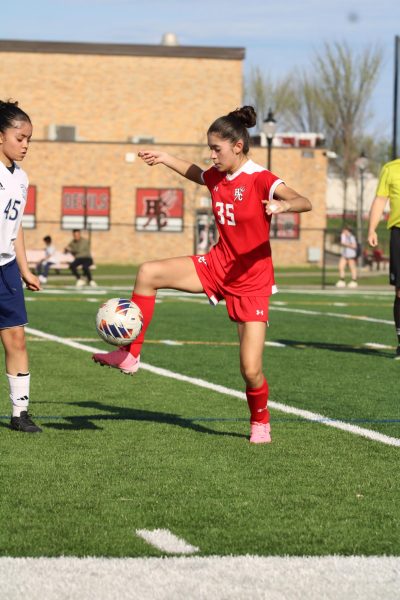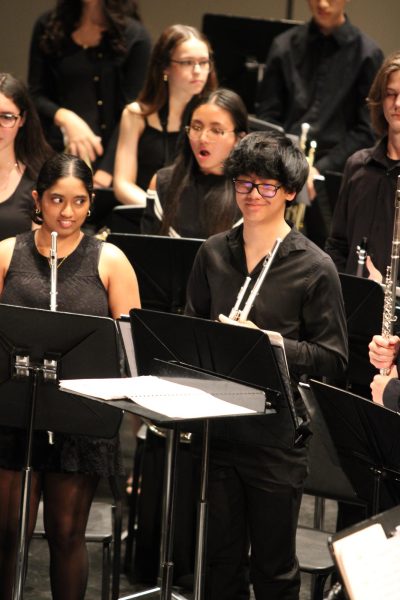Reactions vary as students and teachers begin hybrid model of learning
one way hallways nearly empty as students return to school in a hybrid model (credits to Faaris Hanif)
Central students and staff members returned to school in a hybrid model starting on Monday, Oct. 5. This was made possible with the new regulations regarding COVID-19 in the state of Illinois. Families in the community had also expressed their frustration with remote learning, urging the district to change their learning model.
On Sept. 10, students and parents from the district gathered in front of Central to protest remote learning, arguing that it causes depression and is a threat to students’ mental health. Protesters mentioned that the COVID-19 survival rates for people 18 and younger is 99.9%, which should allow Central students to return to school.
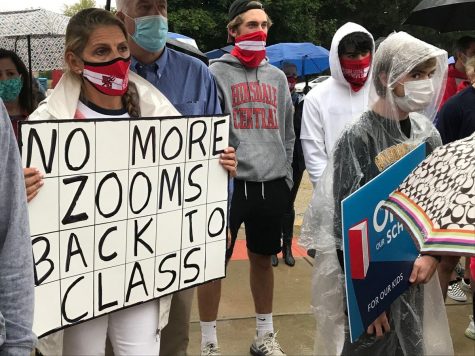
The district developed a hybrid model to satisfy concerns over fully remote learning and fully in-person learning. Students and staff members have expressed the benefits and concerns of the newly developed hybrid system.
Upon arrival at school, many measures have been taken to prevent the spread of COVID-19. These protocols include one way hallways, masks, temperature screenings prior to entering the building, and a four-group system for the students.
“Teachers are being strict about one-way hallways. I did not originally think that this protocol would truly be followed, but hallway supervisors are making sure it is,” said Katie Cosentino, sophomore.
Administrators were concerned with the social-emotional learning experience of the students, or lack thereof, during remote learning.
“My social-emotional well-being has gotten worse,” said Faaris Hanif, junior. “It’s sad to see what school is like now, and how different it is. At least during remote learning I didn’t get my hopes up for a regular school year.”
Others disagree due to the opportunity to connect with fellow friends and classmates.
“I think [returning to school] improved my mood for sure, I got to see people I haven’t seen since March. I think that’s a huge reason to go back,” Cosentino said.
The lack of student-teacher relationships was also a primary concern for both the teachers and students. However, many teachers are optimistic about the switch to in-person learning.
“It’s just been two days, but I can already see the benefit,” said Mr. John Williams, science teacher.
Teachers now have the responsibility of teaching students in the classroom as well as students at home. Many have voiced their concern over the educational value of this hybrid method.
“I am concerned about the loss of instructional time, which puts a lot of strain on completing class content. I do want to give a shout out to the Hinsdale administration who have been working very hard through all of this,” said Mr. Kevin Wiland, math teacher. “They are making very difficult decisions to help ensure everyone’s safety while also trying to provide an excellent education for all students.”
Students are also concerned about the education they are receiving from hybrid courses.
“I am concerned that I will not be able to understand the academic concepts as well as my peers will be able to while they’re in school and I’m at home,” Hanif said.
As the hybrid method is so new to the district, teachers have had to alter their curriculum immensely.
“So far I’ve put in about two or three hours preparing for class, for every hour I’m in class,” Williams said.“There is so much work needed to convert ‘regular lessons’ into meaningful Remote and Asynchronous lessons. I don’t see that changing much until we are 100% in class, then it should get easier because I can use most of my old resources from previous years.”
Clearly the teachers’ goals have been to mimic the learning environment from past years, and to not allow the students’ education to suffer due to COVID-19.
“I think I am learning just as much as I would during a normal school year,” Cosentino said. “Some of my teachers said that they are cutting out certain concepts from their curriculum, but everything important is remaining.”
However, as all classes will continue to be through Zoom, students have been unable to take part in usual activities such as English discussions or hands-on science experiments.
“I feel like one important aspect of learning is gathering your peers’ opinions and learning from their mistakes, something that we will not be able to do this year,” said Hanif.
Although administration will never please everyone, the hybrid model has seemed to resolve some issues regarding social-emotional learning and weak relationships with teachers, while also hopefully maintaining the community’s safety during these unprecedented times.
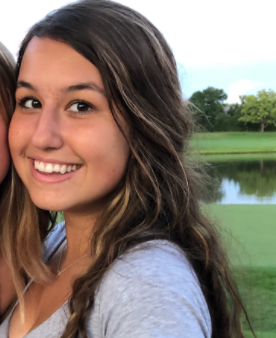
Taylor Fodor, a senior at Hinsdale Central, is excited to be entering her second year on Devil’s Advocate. She is a pommer at Central, and can be found...








